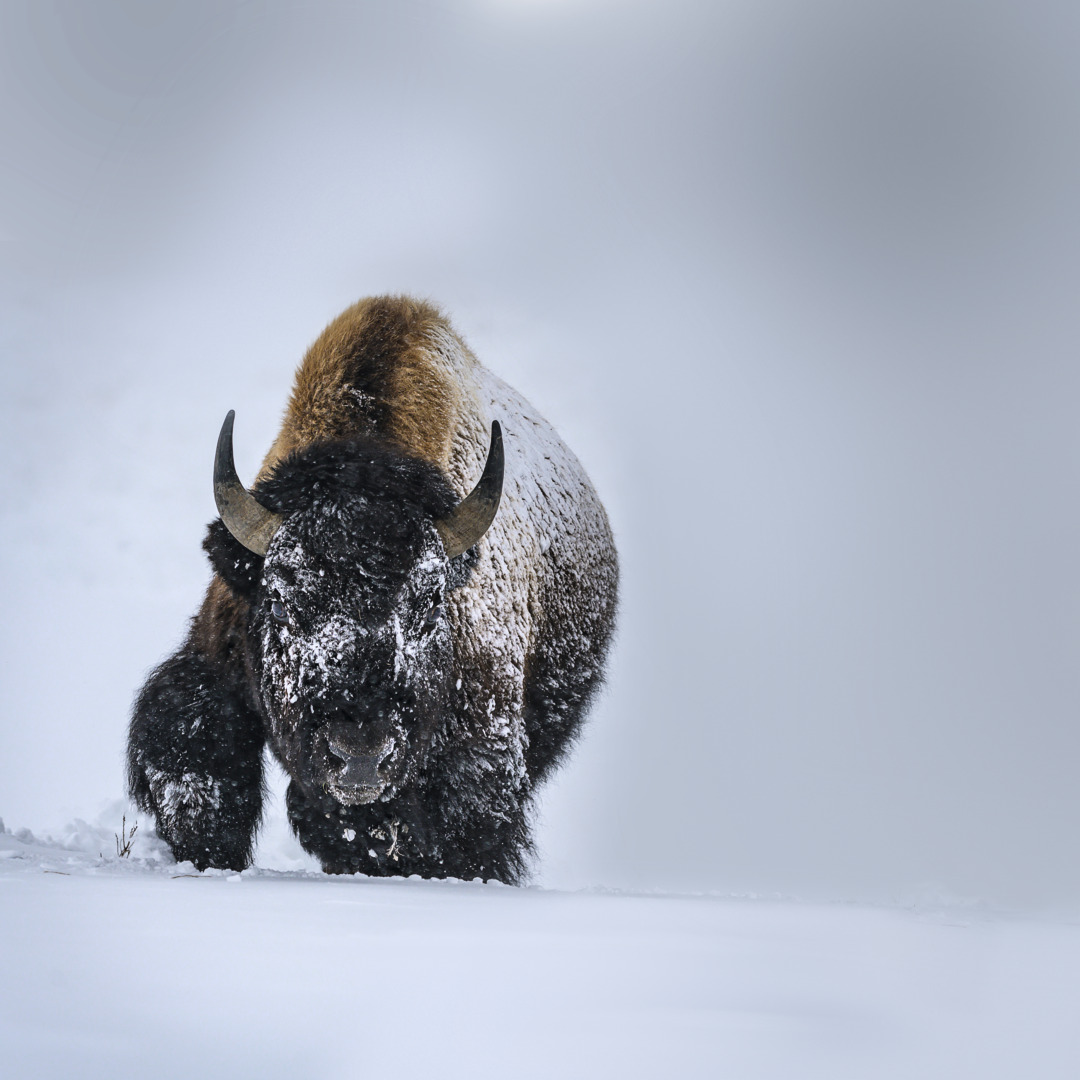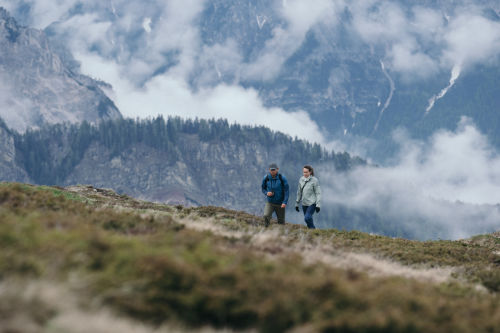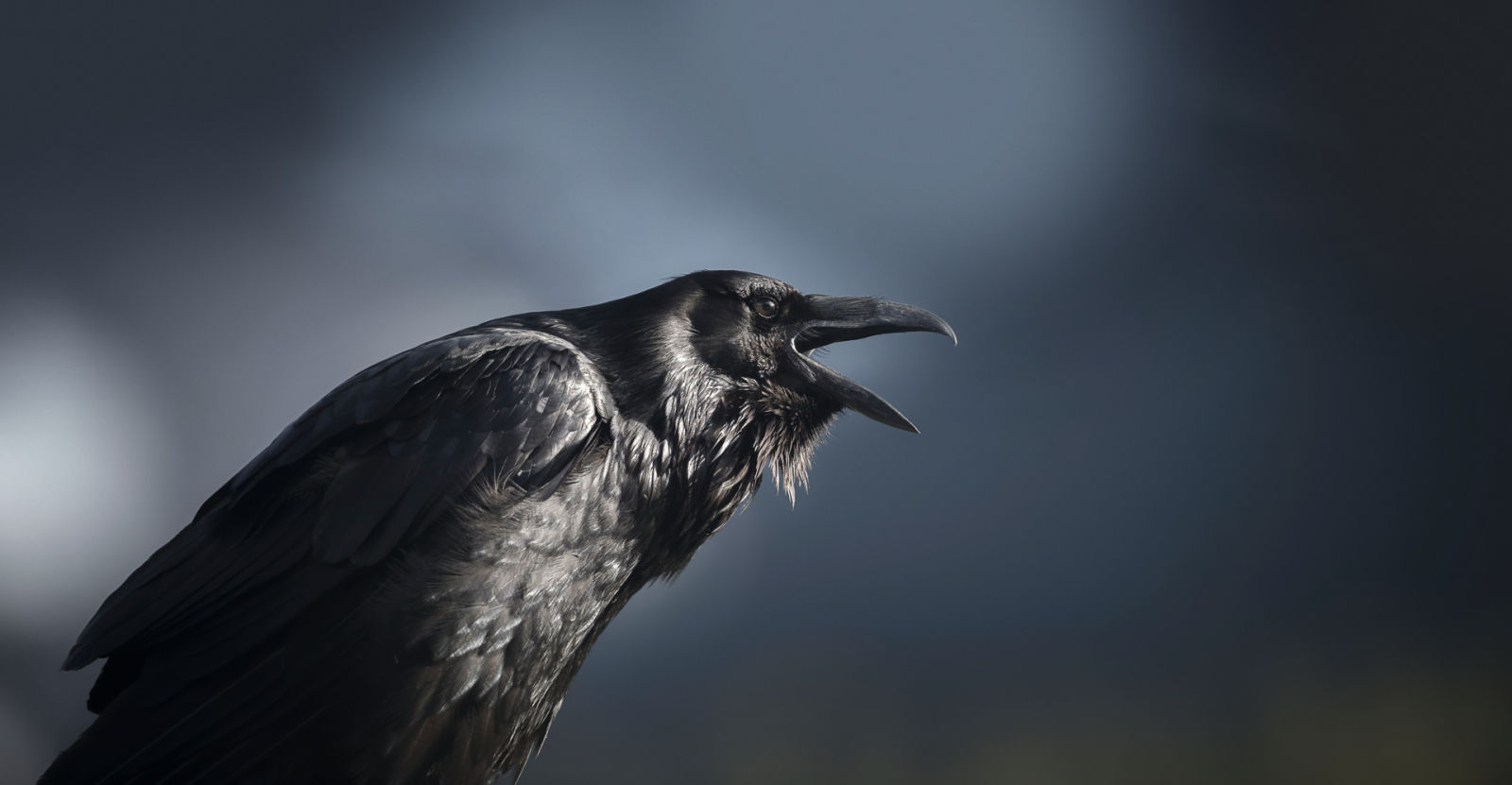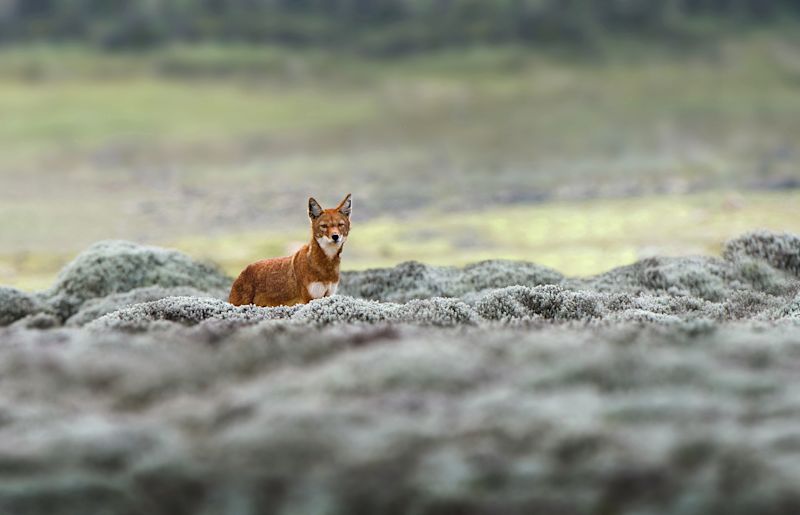THE EARLY BIRD CATCHES THE...
It’s dark and cold. In the distance the coyotes are howling. For a moment, I think they’re wolves, but the howls are more high-pitched and shorter than those of their larger relatives. Finally, the first rays of light appear over the mountain ridge, but it will still be hours before the sun is strong enough to warm us up. A herd of bison lumbers along the road in search of patches of grass that have been blown clear by the wind. At least the car shelters us from its icy blast, but the cold is still slowly and steadily creeping up our legs.
Suddenly we hear a teasing “weer weer wock wock wock” and again “weer weer wock wock wock” from another direction. Black-billed Magpies – a species closely related to the Eurasian Magpie that is native to Europe – are flying straight toward an animal carcass, just as if they know the food awaited them. But they couldn’t possibly know, because we only laid out the dead mule deer as bait an hour before, when it was still pitch black. Clearly magpies are adept at tracking down food through their sense of smell. Perhaps they can help us to lure the shy creatures that we are actually waiting for? Will today be the day? Will they show up and unsuspectingly perch on our bait? Or will it be just another day like the rest, a day of endless waiting and hoping that turns to feverish excitement before we realize once again that it’s a false alarm, followed by disappointment and resignation – all out in the freezing cold! We continue waiting patiently. Half an hour goes by, and we watch more and more magpies gathering at the carcass. They peck out lumps of flesh and fly off with them, returning with empty beaks a short time later.

Like many other birds of the crow family, magpies store food to tide themselves over when nutrition is scarce. At least 20 magpies are now helping themselves to this rich source of food. Where have they all appeared from? We didn’t see any yesterday. How many of their food caches do they remember, and how many of their hiding places are plundered by other creatures, such as coyotes? And, the million dollar question, what makes two biologists lay out a dead animal 2,000 meters (6,500 feet) up in the Rocky Mountains in the depths of winter, long before sunrise? At least this question has a clear answer – Common Ravens! But first let’s take a look at the backstory.
TALES AND LEGENDS
Certain creatures have always sparked people’s imagination, and our relationship with them is often quite ambivalent. Tales and legends reveal our interest and wonder, but also our fear and hatred. Even in today’s supposedly enlightened times, positive or negative emotions are quickly stirred up when wolves or ravens start to encroach on our cultural landscape.
But what is the relationship between these two species? According to legend, the Norse god Odin was accompanied by a pair of ravens and two wolves. Odin sent out the two ravens, Huginn and Muninn (“thought” and “memory”) every day at dawn to bring back news of what was happening in the world. The wolves, Geri and Freki (“ravenous” and “greedy”), had to eat all the food that was brought to Odin in Valhalla because the god himself drank only mead. We don’t know whether the ravens occasionally snatched food from the wolves to eat themselves.
In the wild, wherever there are wolves – and particularly wolf kills – ravens are never far away. Many decades ago, wolf researchers observed that ravens sometimes accompany wolves, following their tracks in the snow and responding to their howls.


After wolves were reintroduced in Yellowstone National Park in the mid-nineties, this area has become one of the best places in the world to observe wolves in the wild, and they are often accompanied by ravens. Keen wildlife watchers and scientists soon came to different conclusions about the relationship between the two species. Some think that ravens use wolves in order to live off their food, almost like parasites, while others see it as more of a symbiotic relationship between two species who co-exist for their mutual benefit. Theories and anecdotes began to spread under the guise of facts, for example, that ravens will draw the attention of wolves to prey animals or look after their young in the wolf den. But what lies behind these stories? Do these two species actually need each other or are ravens simply experts at using wolves to provide their food? These and many other questions are being addressed by our current research project in Yellowstone National Park.


INITIAL FINDINGS
Our study is still in its infancy, but even these early findings show that ravens in Yellowstone National Park cover an area many times larger than the range of individual wolf packs. A direct comparison of the movements of the two species suggests that ravens do not follow wolves. But ravens are experts at finding wolf kills, and they do it with amazing speed. Sometimes they fly many miles to find these food sources. Ravens are also good at finding cougar kills and animals that have died from other causes.
As researchers, we use the GPS data transmitted by the ravens to locate the carcasses and observe ravens from a distance, along with a wide variety of scavengers, from magpies and eagles to coyotes, wolves, and Grizzly Bears. The question of how ravens find these food sources remains unresolved for the time being. To what extent do they rely on their senses in their search for food? And how much attention do they pay to the behavior of other birds and animals, such as the conspicuous back-and-forth of magpies or the wolf howls that are often heard after a successful hunt?
Ravens are also experts at finding anthropogenic food sources, i.e. human food sources such as landfills, sewage treatment plants, or popular hunting grounds outside the national park. Surprisingly, in winter many ravens leave their territory in the national park almost daily to look for anthropogenic food sources outside the protected area, often flying more than 100 kilometers (60 miles) from their territory.
Ravens up to the age of four and those that have been unable to establish a territory with a partner despite sexual maturity often cover even greater distances. Two ravens are currently living in Canada, more than 700 kilometers (400 miles) from where they were tagged.

About
MATTHIAS-CLAUDIO LORETTO
is an Austrian behavioral biologist. As part of his PhD at the Konrad Lorenz Research Unit at the University of Vienna, he was the first person to equip ravens with GPS transmitters in order to study their movement in the Alps. In 2019 he moved to the Max Planck Institute of Animal Behavior in Radolfzell, Germany, where he is currently working on an EU-funded research project to study the relationships between ravens, wolves, and other species in Yellowstone National Park.














